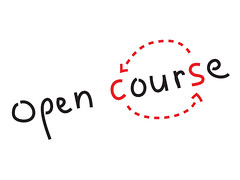Have you ever wondered why so many people believe that the open source software movement is a good thing?
There is a common belief that the wisdom of the crowds is right because many more people have a say in it and more eyes are watching what is being said. It is the collective vs. what one person believes, and that people are willing to provide their wisdom in an open and free platform.
But does it work well outside of software?
For example, within education, medicine or even music? Is it the answer to all things?
We, in education are moving towards more and more open systems as well. In software development, where this movement originated, there are many examples of its success, FSF, Linux, Mozilla Firefox to name a few, yet does it work and will it work for education?
Intuitively it makes sense to someone like me that we need to try the phenomenon of Open Educational Resources as well such that we can alleviate some of the problems in education e.g. cost of textbooks, production of instructional material in a much more time effective manner, etc. Like many other writers, Yochai Benkler in his paper “Common Wisdom Peer production of Educational material” talks about many significant benefits when using common wisdom approach over commercial developments of educational material. His major points include:
- Common wisdom approach taps many more contributors vs. single author
- Do not have to have a standard product for many different districts or states vs. many learning objects that can be used by different teachers for different learners according to their own needs
- Global reach for the poorest
- One-size-does-not-fit-all benefit
- Moving away from the tightly controlled environment to generating collaborative network for all kinds of learning materials.
It is clear to many if not all educators that one-size-fits-all is really one-size-does-not-fit-all. When will we start educating students beyond the let’s teach them as a group?
If you were to ask me, “What is the one thing that we can do that will take us to that step?” I would respond that, as a first step, we can provide access to information to students for free.
I believe that leveling the playing field for one will help as a first step towards helping educators be more successful. Note that while I am not implying that this would ensure success in learning, what I am saying is that access to information is an important part of providing education to everyone.
I still remember when I came to the US, the fact that I could walk into a library and have access to “Scientific American” was such an exhilarating experience; something that made me want to learn. This is the emotion we need to invoke when we open the doors of the collective library to our upcoming students.
Now if this is the case, why is it so hard for educators to take the leap of faith and contribute to the open educational resource effort?
I think the answer lies in the message of Carol Dweck, the author of the book “Mindset“. It is really hard to move from what you firmly believe. If you believe that the process of writing a textbook is hard you will not attempt it.
We also know that many educators make their own instructional materials and put aside the textbooks that their districts or states have made them buy. If you have the tools and have been producing your own text material why would you not contribute your work so that you can help many other students? In our focus groups we have found that even if the teachers have well tested and contextualized material they will not contribute. The primary reason for this is because many teachers believe that their work is not perfect, will not be right, and hence they are reluctant to take that leap and open their work for others to criticize.
There are many excuses to not contribute, but there are many compelling reasons to do so. Let’s list the main reasons to contribute:
- Customize content for students
- Empower educators, parents, as well as the students themselves to use content that is right for that particular student
- Heavy weight on young peoples backs for more information read “Pack it Light, Wear it Right,” in Washington Post.
- Change the long lead time as well as the expensive ways that textbooks are produced and increase accessibility
But some feel they cannot contribute, whether it’s a perceived lack of experience, or more likely lack of time, there are many ways to contribute to the “open source” movement. We only need look at the software world for some guidance. Ways include:
- Help by writing small units, questions and answers, alternative explanations
- Help improve the books that we have seeded
- Help determine the quality of the images that we have produced,
- Help with editing the content on our site
- Help with placing tags
- Help with identifying the content to your State standard
- Help by contributing any content that you might have authored or are using in your own classroom. Please make sure that this content is not copy righted but can be converted to CC by SA license.
- Help us using the material and giving us feedback so that we can take the content to the next level
- Help us by identifying any multimedia material that you use that we can place in the content for future
Even if you only contribute one single sentence, then that means we are one sentence further forward than we were without you. Each contribution, no matter how big or how small, is moving us all forward.
Related Entries:




